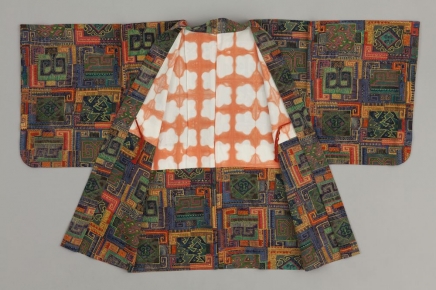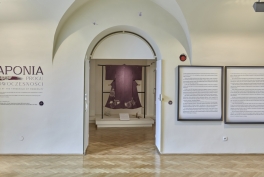MNK The Szołayski
pl. Szczepański 9, 31-011 Kraków The Szołayski House (ground floor)- Wednesday - Sunday: 10.00-16.00
- Monday: closed
- Tuesday: 10.00-18.00
Information and reservations on weekdays 9 a.m.- 4 p.m.
The Director of the National Museum in Krakow
Deputy Director for Programme Activity
Deputy Director for Strategy and Communications
Deputy director for the Management
Chief Accountant
Chief Cataloguer of the National Museum in Krakow
Chief Conservator

The exhibition ‘The Tradition of Japanese Clothing. Forms and Transformations from around 1900 to the 1960s’ (17.03.2023 – 2.07.2023) is the first of threescenes of the series ‘Japan at the threshold of modernity. Design and patterning of clothes from around 1900 to the 1960s as an example of contemporary gifts in the National Museum in Krakow’, presenting classic Japanese costumes and those characteristic of this extraordinary eastern tradition.
The exhibition is telling about the history and cut of kimonos and obi sashes, in addition to the fact that they tie up, as well as about extremely attractive short haori coats and michiyuki travel coats. In the second scene of the cycle, entitled 'The Role of Motifs in Japanese Design' (5.07.2023 – 8.10.2023), we develop the theme of traditional decorative motifs with an explanation of their origin and symbolism. The third exhibition, 'Photographs of Japan at the Dawn of Modernity' (13.10.2023-31.12.2023), presents Japanese costumes recorded in old photographs – albumen prints stored in the collection of the National Museum in Krakow.
The idea behind the cycle is to show the gifts that the National Museum in Krakow has received in recent years. Emphasising the role of donors, we talk about the collection strategy of the NMK, we also show examples of woodblock prints from a donation given to us by Dr. Jens Wiebel.
In the interiors of the Szołayski House, we present about a hundred robes and elements of Japanese garments, including century-old kimonos, and an unusual exemplary sheet of tanmono fabric from which they were sewn, over ten metres long.
The exhibition is addressed to a wide audience. Each of the subsequent scene of the series has been designed in such a way that people with different degrees of interest in Japanese clothing and design, with different levels of education and at different ages, find special value in it.
Exhibition Curator: Beata Romanowicz
Curator Assistant: Agnieszka Gach







